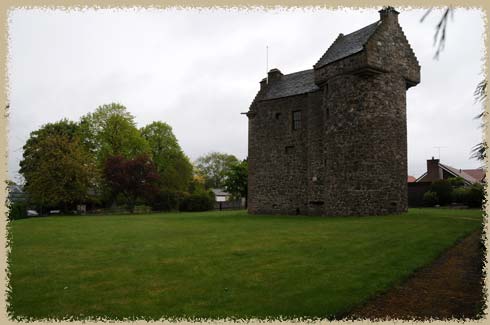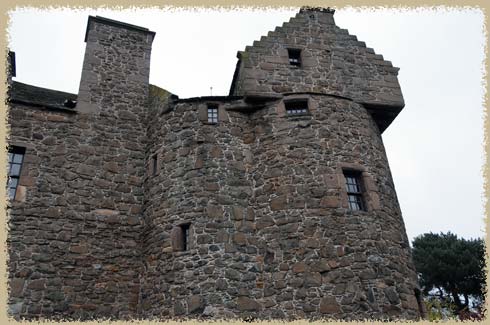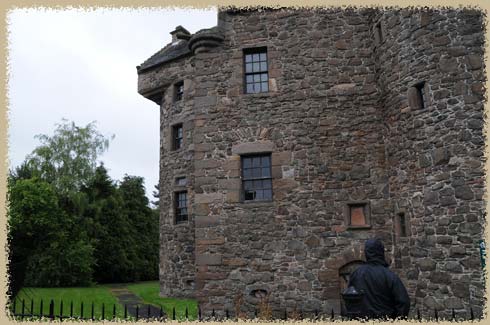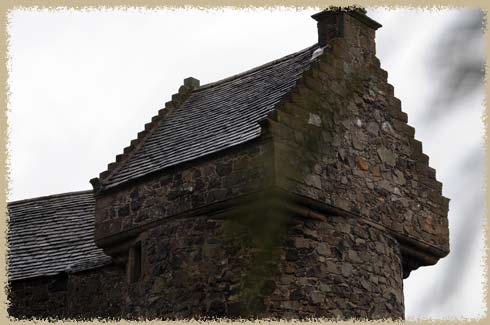Claypotts Castle
The pouring rain (and about forty-seven roundabouts in Dundee), nearly made us pass by Claypotts, but we parked up the street and walked down to the tower, and took pictures while hiding under the trees, to get out of the rain.

a square cap on a round tower is not too common
16th century Z-plan tower
There are very few catles in Scotland where a square caphouse tops a round tower. The main block is a three-story rectangular block, with round towers on opposite corners - both of them topped with peculiar little caphouses. It's interesting that one of the caphouses is actually smaller than the tower it sits on. A smaller stair tower - really just a rounded bulge from our vantage point, is tucked into the corner of one of the towers and the main building. The second tower was added almost 20 years after the first - one tower is dated 1569, the other is dated 1588.
There is a first-floor hall, over vaulted cellars, and the third story is also a single open room. The towers contained the individual living spaces - four squareish rooms in each tower. The form of the castle is a fortified house, and there does not appear to be a castle wall or courtyard associated with it.
The windows are small, as befits a defensive house, and the first-floor cellars have a number of gunports (including one in the back of the kitchen fireplace!). The western staircase led from the main entrance, while the opposite stair was smaller and more private - providing access to the rooms in the tower.

the stiarcase in the re-entrant angle
Ownership
The nearby abbey of Lindores owned the lands in the 16th century, and passed them to the Strachan family, who were tenants of the abbey, in 1560. The two towers bear the arms of John Strachan.
The castle passed to the Grahams in 1601. Sir William Graham deeded the castle to his son, David in 1616, but was sold to another member of the family in 1620. The Grahams were well known in the area for their anti-covenanter atrocities. His lands were forfeited after his death at the Battle of Killikrankieo by William III. They went ot the Douglases in 1694 (who probably never used or lived in the castle. When the Duke of Douglas died in 1761, legal battles about ownership continued for eight years, eventually bestowing the property on Archibald Douglas. Later in the 19th century on to the Homes family.
It was given to Historic Scotland by the Homes in 1926.

the later casement windows in the main block

square caphouse on round tower


